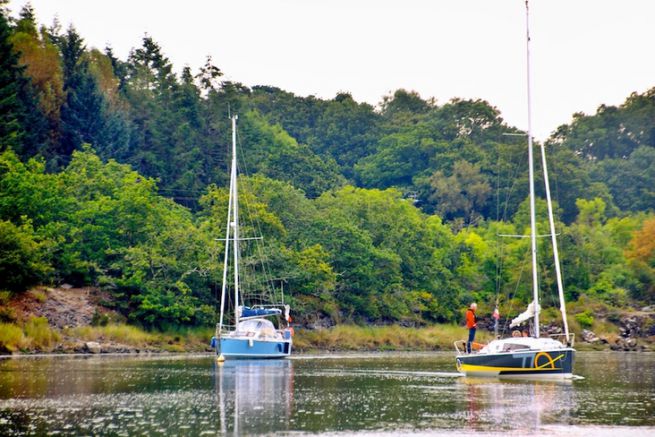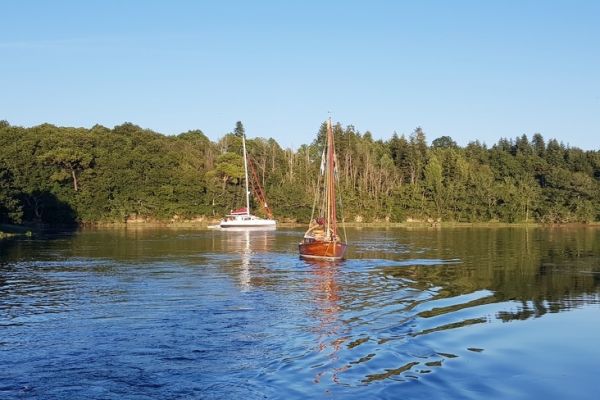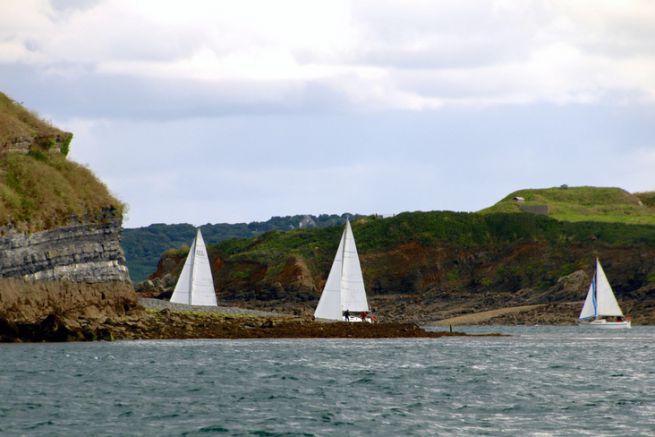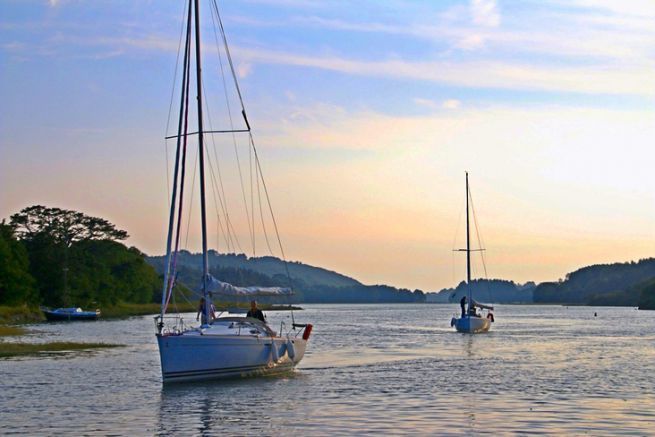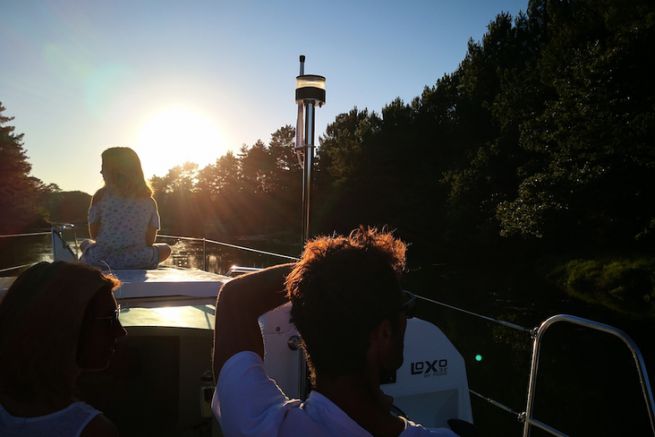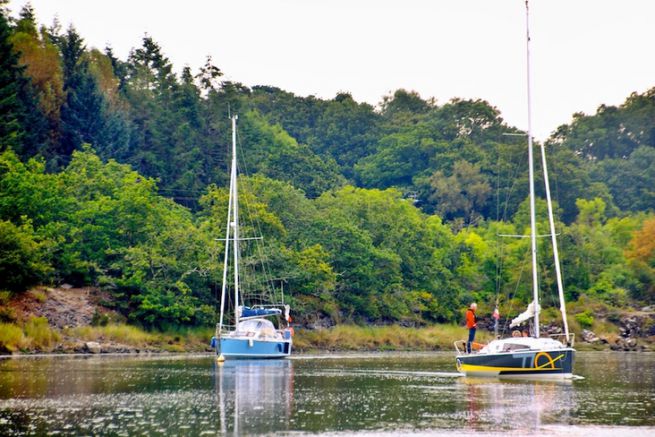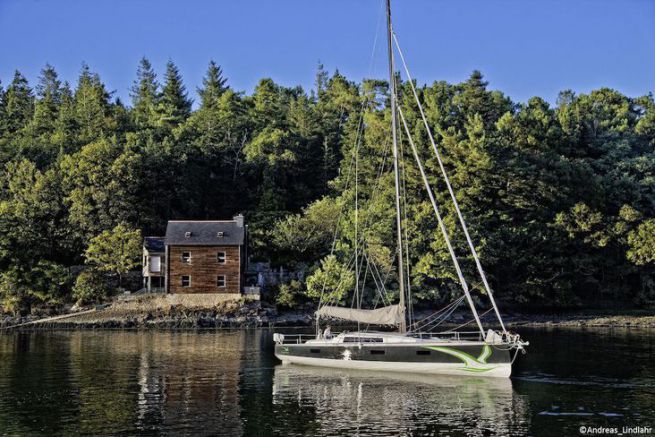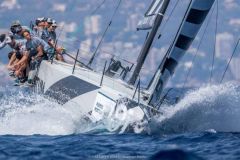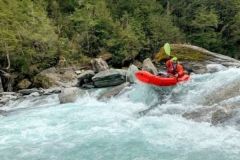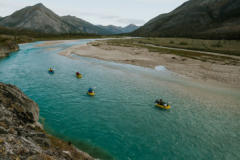Taking turns from the outside
In a river, the preferred path of water is sometimes unpredictable. The actual riverbed has been shaped by time, erosion, landforms, and climatic events.
One rule prevails: water prefers the outside of the turns. If there are no markers, you should try your luck by going around a bend rather than cutting in at the rope to save time.
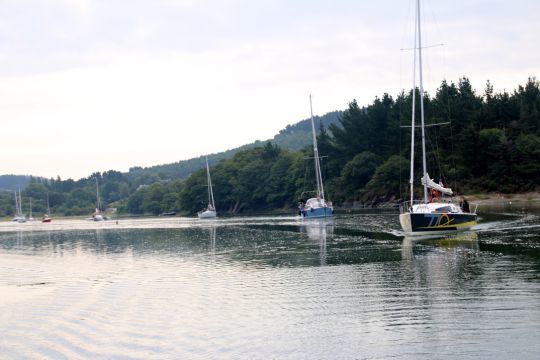
Follow-up of the marking
Fortunately, most of our rivers are well marked to facilitate piloting. The risk is to miss one or more buoys during the navigation and suddenly deviate from the channel.
In our dummy example, coming from the south it would be very easy to see the red buoy straight ahead about 800 meters away, rather than turning to port toward the green buoy.
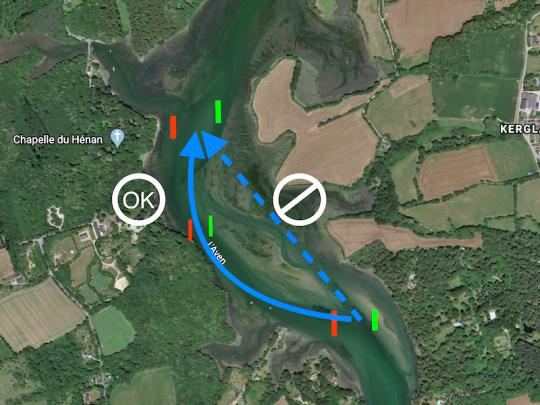
To avoid this trap, there is nothing like a good preparation of the navigation by noting on a notepad the number of buoys or their numbers, if they are identified.
By moving with the map in front of you, you will be able to constantly compare it with reality. For those who are equipped, electronic cartography can help. But compared to navigation at sea, we often realize the relative inaccuracy of gps and/or electronic maps. Moreover, some bottoms move according to the weather events.
When turning, avoid going off the road
The current is a major element of river navigation. We move on the surface of the water, which itself moves. We move on a conveyor belt and when we have to make a turn the consequences are important. If we are not careful, the current will take us far beyond the turn we thought we were making, with the risk of running aground.
To avoid off-tracking, steering by alignment is by far the safest. The technique consists of finding two landmarks that line up on the desired course. The boat is then steered in such a way as to keep the two mooring lines aligned. This is the assurance of controlling the bottom road, which can be quite different from the surface road. In the river, there is no lack of alignments, you have to be imaginative, but exclude anything that moves (like a cow).
In our example, the red boat has let itself be swept away by the current and risks leaving a trail in the mud bank it is trying to avoid.
The white boat knows that it must beware of the current, so as it begins its turn it has spotted an alignment between a rock on the bank and the chimney of a house. It will keep this alignment and sometimes seem to sail sideways, but on the bottom it will stay in the river bed.
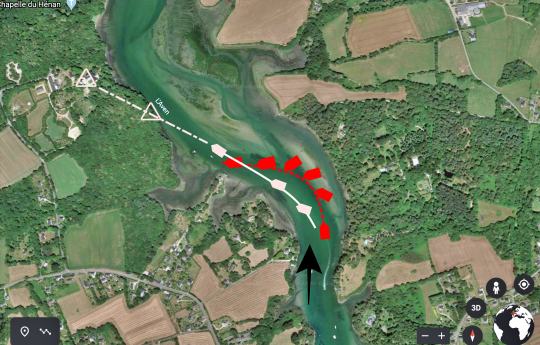
The technique of the ancients
The ancients had a very interesting technique for navigating rivers, they seemed to sail backwards! The luggers and the tidal boats had to move without wind in the rivers.
The technique consisted in using the flow to go up by letting the anchor (upside down anchor) scrape the bottom to reduce the speed of the boat in relation to the current; we thus create a flow of water around the rudder which makes it possible to direct the butt of the boat. After trying it out, it's not very maneuverable, but it works. It is a technique that can be used in case of engine or wind failure.
